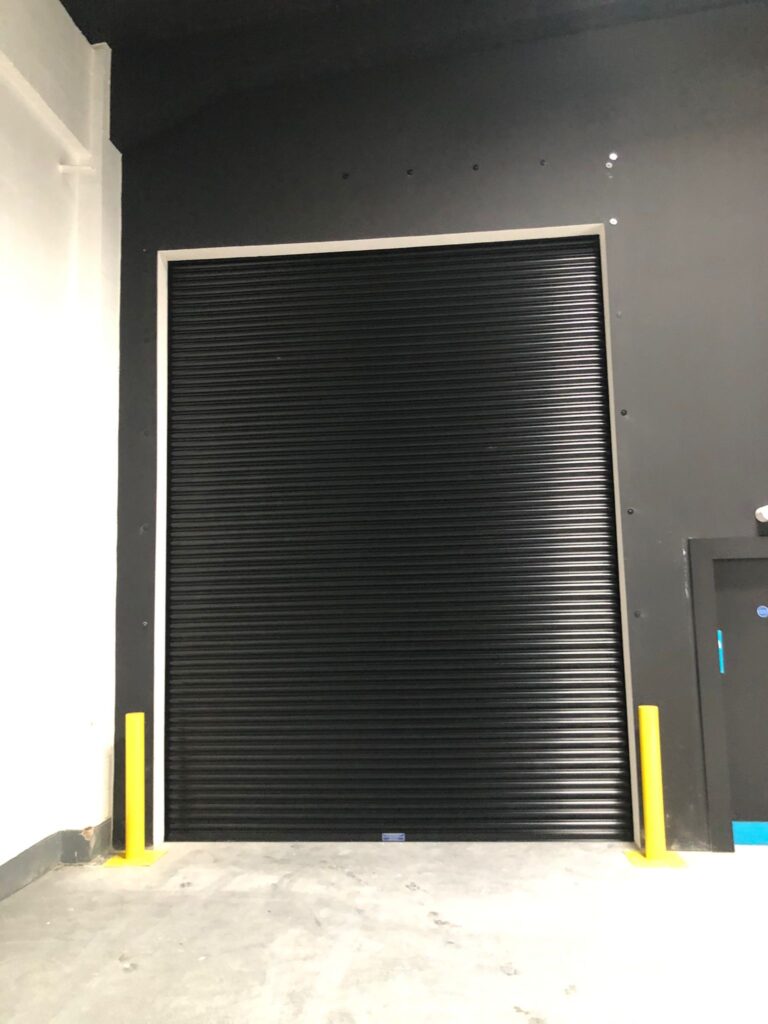
Sometimes known as bollards or anti-ram posts, safety posts are static poles that can be installed in front of openings, corners, or vulnerable parts of buildings to clearly mark the area and try to prevent impacts from vehicles.
Some styles may be telescopic, meaning they can be lowered into the ground when not in use, and others may be folding, so they can fold down out of the way. However, these are more expensive and complex to install.
The fastest and simplest way to install safety posts is to use surface-mounted bollards, which are anchored in place using bolts through a flanged base plate – no messy digging needed or deep holes left behind after removal.
So, if you have a time-sensitive requirement for safety posts for your roller shutters or rapid roll doors, then floor-mounted protective posts are just the solution. Read on to learn what the installation process involves!
1) Site assessment and planning
Before we can install safety posts at your property, we need to conduct a site assessment. We’ll visit the premises to inspect the area and determine the right type, quantity, and placement of posts, taking underground and surrounding hazards into account.
With your input, we can then use the results of the site assessment to create an installation plan that suits your layout and complies with local regulations and national safety standards – so we can provide posts with the optimal height, spacing, and visibility.
2) Preparing the ground
On the installation day, you should prepare the ground by cleaning the surface of any dirt or debris that could affect the bollard placement. We can then temporarily place the posts and mark the location of the holes in the base plates on the concrete or asphalt.
Once everyone is satisfied with the positioning of the bollards, we can use a masonry drill bit to create pilot holes through the markings. Then it’s time to drill the holes precisely to the depth and width required for the safety post design specifications.
3) Securing the posts in place
Before we can secure the bollards, we’ll need to clean any debris out of the drilled holes. Once clear, drop-in inserts can be set into the holes to expand below the surface. We can then remove any packaging on the post and line up the holes with the base plates.
After settling on the final alignment, anchor bolts can be inserted through the holes in the base plate and into the holes in the ground underneath, secured with the inserts. Washers are then placed over the top of the bolts and tightened evenly to hold the post in place.
4) Inspecting the installation
Following the completion of the installation process, it’s important to inspect the fixed bollards both close-up and from a distance. We’ll triple-check that the post is straight and the base is flat against the surface of the ground, with all bolts secured properly.
It’s also essential to conduct regular maintenance to test the bollards and make sure they’re still firmly secured and functional. Some wear and tear is inevitable, but any abrasions or rust should be addressed as quickly as possible to maintain the lifespan of the post.
Looking for professional safety post installation?
If you’re searching for safety posts that can be fitted quickly, with minimal damage to the ground for easy removal if needed in the future, then bolt-down bollards with base plates anchored to the ground could fit the bill perfectly.
Here at Roller Shutter Services, we supply, install, and maintain a range of roller shutter doors and protective structures like anti-ram barriers and safety posts. We can help you design and fit roller shutter safety posts with a stress-free process, making it as fast and cost-effective as possible with high-quality results.
To speak with our team about surface-mounted bollards, give us a call on 0800 328 9356 or email info@rollershutterservices.co.uk!
